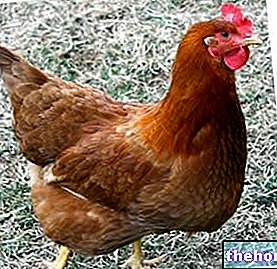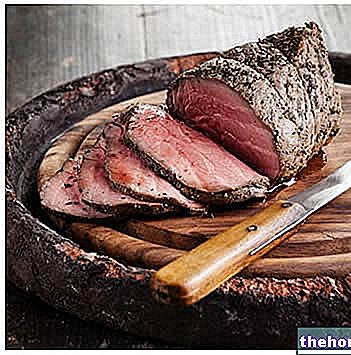Aging is a natural chemical-physical process, which occurs spontaneously in the skeletal muscles of freshly killed animals, gradually transforming them into meat. For this reason, before being offered to the consumer, the meat is left to mature (hang) and soften for a few days.

Particularly long aging times are also required for game (black meats), while white meats (guinea fowl, chicken, rabbit, turkey) and those of particularly young animals (lamb, kid and veal) require much shorter times (0 -72 h). In fact, young and small animals require shorter maturation periods than those required for the meat of large animals.
Regardless of the size of the animal and other factors, the duration of this process is inversely proportional to the temperature at which it is performed; this means that the higher the temperatures and the lower the aging issues, and vice versa.
The limit of maturation is that it takes time, therefore money. Therefore, the food industry is particularly attentive to all possible solutions to reduce the maturation times, often with damage to the flavor and tenderness of the product. In particular, some rapid maturation techniques have been developed, carried out at temperatures of 18-20 ° C, in which - to avoid excessive drying, the development of microorganisms and the consequent putrefaction - the environment is humidified and treated with sterilizing means such as ultraviolet radiation.
The muscle, immediately after the slaughter, is not edible due to its extreme hardness. During maturation, some biochemical processes take place that modify the structure of the meat making it edible and increasing its flavor, with a pleasant sensory perception by the consumer.
After the death of the animal we can distinguish three phases, which occur in all types of animals, including fish; their duration varies however according to size (they are much shorter in small animals):
- Pre rigor: from a few minutes to half an hour after the death of the animal. An anaerobic metabolism remains in the cells, leading to the transformation of sugars into lactic acid; for this reason there is a lowering of the pH which passes from 7 to 5.6 - 5.7. As a result, the carcass stiffens and the meat is leathery and tasteless.
- Rigor mortis: from 3-6 hours up to 24 hours after the death of the animal; in the absence of ATP, actin and myosin are bound irreversibly, the muscle is shortened and the meat stiffens significantly, becoming particularly hard and firm.
- Post rigor: tenderizing phase due to the proteolytic action of enzymes on myofibrillar proteins; the meat returns soft and becomes edible, at the same time the pH gradually increases up to values close to neutrality. During maturation it is important that the pH of the meat does not change. shift towards alkalinity, as a condition favoring the development of putrefactive reactions.
Other Foods - Amatriciana Meat Lamb - Lamb Meat Duck - Duck Meat Pork Chop Florentine Steak Boiled Broth Raw Meat Red Meat White Meat Beef Horse Meat Rabbit Meat Pork Meat Vegetable Meat Lean Meat Sheep and Goat Meat Carpaccio Ribs Cotechino Cutlet Snails or land snails Pheasant and Pheasant meat Guinea fowl - Guinea fowl meat Pork fillet Chicken Hamburger Hot Dog Kebab Patè Chicken breast Turkey breast Chicken - Chicken meat Meatballs Porchetta Quail - Quail meat Ragù Sausage Game Zampone OTHER ARTICLES MEAT Categories Food Alcoholic Meat Cereals and derivatives Sweeteners Sweets Offal Fruit Dried fruit Milk and derivatives Legumes Oils and fats Fish and fishery products Salami Spices Vegetables Health recipes Appetizers Bread, Pizza and Brioche First courses Second courses Vegetables and Salads Sweets and Desserts Ice creams and sorbets Syrups, liqueurs and grappas Preparations of Basic ---- In the Kitchen with Leftovers Carnival Recipes Christmas Recipes Diet Recipes Light Recipes Women's Day, Mom, Dad Functional Recipes International Recipes Easter Recipes Recipes for Celiacs Recipes for Diabetics Recipes for Holidays Recipes for Valentine's Day Recipes for Vegetarians Recipes Protein Regional Recipes Vegan Recipes
















.jpg)











